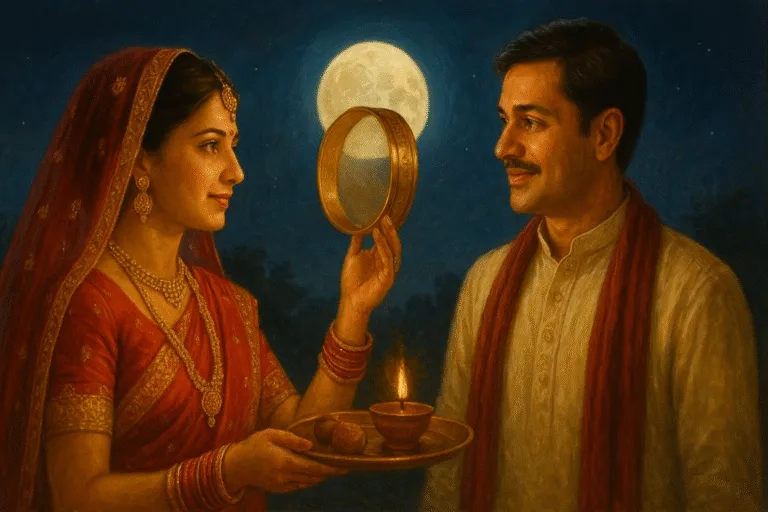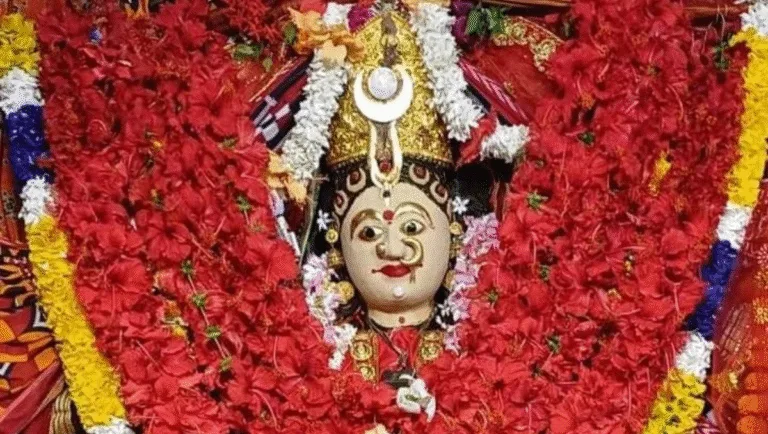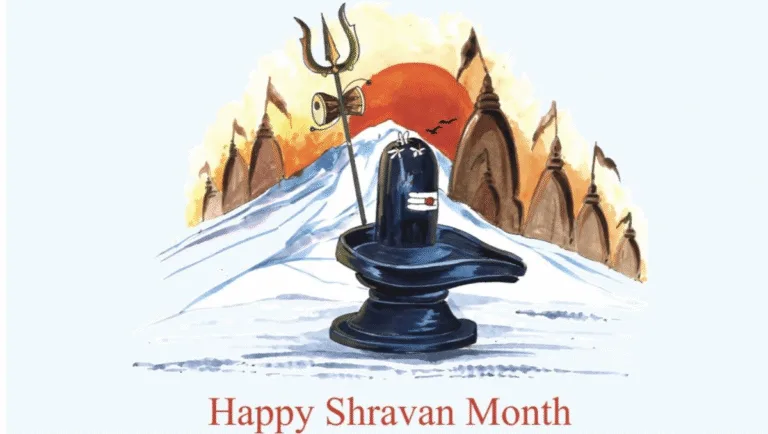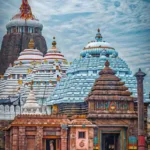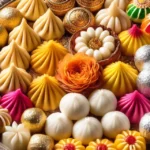In the rich tapestry of Hindu traditions, the Mangla Gauri Vrat stands out as a profound observance dedicated to Goddess Parvati, the embodiment of marital bliss, strength, and feminine power. Celebrated with immense devotion, primarily by married women, this sacred fast is a cornerstone of the holy month of Shravan. Its observance on every Tuesday (Mangalwar) of this month is believed to bestow long life upon husbands, foster a harmonious marital life, and usher in prosperity for the entire family. For unmarried women, the vrat holds the promise of being blessed with a virtuous and loving husband, akin to Lord Shiva.
The significance of Mangla Gauri Vrat is deeply rooted in Hindu mythology and astrology. Shravan is considered one of the most sacred months in the Hindu calendar, a period dedicated to the worship of Lord Shiva and his consort, Goddess Parvati. Tuesdays are governed by the planet Mars (Mangal), a celestial body associated with energy and courage, and in Vedic astrology, it can also signify marital conflicts. The convergence of this sacred month and the powerful energy of Tuesday amplifies the spiritual potency of the Mangla Gauri Vrat, making it a powerful tool for seeking divine blessings and mitigating malefic planetary effects.
The Intricate Rituals: A Step-by-Step Guide
The observance of Mangla Gauri Vrat is a meticulous process, filled with devotion and symbolic gestures.
Preparations and Sankalpa (The Vow):
The day begins before sunrise, with devotees taking a purifying bath and adorning themselves in clean, often new, clothes. Red or pink attire is generally preferred. A sacred space for the puja is prepared, typically in the northeast direction of the home. An idol or picture of Goddess Gauri is placed on a raised platform, which is covered with a red cloth.
Before commencing the puja, the devotee takes a sankalpa, a solemn vow to observe the fast with sincerity, often vowing to perform it for a specific number of years to please the Goddess and seek blessings for her family’s good fortune.
The Puja Vidhi (Worship Procedure):
The worship of Goddess Gauri is an elaborate affair, involving a series of offerings and rituals:
- Ganesh Puja: As with most Hindu rituals, the puja begins with the worship of Lord Ganesha, the remover of obstacles.
- Kalash Sthapana: A kalash (a metal pot) filled with holy water is established, symbolizing abundance and cosmic energy.
- Navagraha and Matrika Puja: On a plate, planetary deities are often created using rice, and a group of goddesses (Matrikas) are made from wheat, invoking their blessings for overall well-being.
- Offerings to Goddess Gauri: The heart of the puja lies in the offerings made to the Goddess, with a particular number holding special significance. These offerings include:
- Shringar Items: A specific number of bridal adornment items, such as bangles, vermilion (sindoor), kajal, and henna.
- Panchaamrit: A divine concoction of milk, yogurt, honey, ghee, and sugar, used for the symbolic bathing of the deity.
- Vastra (Clothing): A new saree or cloth is offered to the Goddess.
- Flowers and Garlands: Red flowers are particularly favored.
- Fruits and Sweets: A special offering of laddus, along with other seasonal fruits and sweets, are offered as prasad.
- Diyas and Incense: A lamp with multiple wicks, often made of flour, is lit with ghee or oil, and fragrant incense sticks are burned.
- Other Auspicious Items: Betel leaves, betel nuts, cloves, cardamom, and various types of dry fruits are also part of the offerings.
The Vrat Katha (The Sacred Story):
A pivotal part of the ritual is the recitation or listening of the Mangla Gauri Vrat Katha. This story not only narrates the power of the fast but also reinforces the faith of the devotees. It is considered essential for the successful completion of the vrat.
Fasting and Prasad:
The fast is typically observed throughout the day. While some women undertake a strict fast without food or water, others opt for a partial fast, consuming fruits, milk, and other sattvic (pure) foods. The consumption of salt, grains, and non-vegetarian food is strictly avoided. The fast is broken in the evening after the final puja and aarti. The prasad, especially the laddus, is distributed among family members, and often given to the mother-in-law and sister-in-law.
The Enduring Legend of Mangla Gauri
The story that underscores the profound efficacy of the Mangla Gauri Vrat is that of a wealthy merchant named Dharampal. Blessed with immense riches and a virtuous wife, their life was shadowed by the sorrow of being childless. Through fervent prayers and penance, they were blessed with a son. However, their joy was short-lived as astrologers predicted that their son was destined to die from a snakebite at a young age.
As fate would have it, the boy was married to a young woman whose mother was a devout observer of the Mangla Gauri Vrat. The daughter, having learned the rituals from her mother, was also a sincere devotee. On the fateful night of her husband’s predicted demise, as a venomous snake approached to fulfill the prophecy, the power of her unwavering devotion to Goddess Gauri manifested. The snake was miraculously transformed into a beautiful garland, and her husband’s life was spared. Goddess Gauri, pleased with her piety, blessed her with a long and prosperous married life. This timeless tale continues to inspire countless women, reinforcing their faith in the divine grace of Mangla Gauri.
The Multifaceted Benefits of the Vrat
The observance of Mangla Gauri Vrat is believed to bestow a multitude of blessings:
- Marital Harmony and Longevity: The primary benefit is the well-being and long life of the husband. It is believed to foster a stronger bond between the couple and ensure a happy and prosperous married life.
- Blessings of Progeny: For childless couples, observing this vrat with faith is believed to bless them with children.
- Mitigation of Mangal Dosha: Tuesdays are associated with the planet Mars, and this vrat is considered highly effective in reducing the malefic effects of Mangal Dosha in one’s horoscope, which can cause obstacles in marriage.
- Spiritual and Personal Growth: The discipline of fasting and the focus on devotion are said to enhance one’s inner strength, patience, and unconditional love. It is a time for spiritual reset and alignment.
- Protection from Negativity: The vrat is believed to shield the family from negative energies and evil influences.
The Udyapan: A Graceful Conclusion
The Mangla Gauri Vrat is traditionally observed for a specific period of consecutive years after marriage. After the completion of this period, a concluding ceremony known as Udyapan is performed. This ritual is typically conducted on a Tuesday in the Shukla Paksha of the Shravan month.
The Udyapan involves a more elaborate puja, often conducted by priests. A mandap is created with banana poles, and the idol of Mangla Gauri is established within it. All the marriage-related items of the woman observing the fast, including her saree and nose ring, are offered at the altar. A havan (fire ceremony) is performed, and the katha is recited again. A number of married women are often invited and honored with food and gifts, including a suhaag pitari (a basket of auspicious items). The devotee’s mother-in-law is also given special reverence and gifts. The Udyapan signifies the successful completion of the vrat and is a way of expressing gratitude to the Goddess.
READ ANOTHER POST – SAWAN SOMVAR VRAT
FAQs
Who is eligible to observe the Mangla Gauri Vrat?
This vrat is primarily observed by married women for the long and healthy life of their husbands. Newly married women, in particular, are encouraged to observe it for the first few years of their marriage. Unmarried women can also observe this fast with the desire to be blessed with a loving and suitable husband.
When is Mangla Gauri Vrat observed?
The Mangla Gauri Vrats are observed on all the Tuesdays that fall during the holy month of Shravan.
What can one eat during the fast?
The nature of the fast can vary. While some women observe a nirjala (without water) fast, it is more common to have a phalahar fast, where fruits, milk, and milk products are consumed. Salt, grains, and non-vegetarian food are strictly avoided.
Is it mandatory to read the Mangla Gauri Vrat Katha?
Yes, listening to or reading the Vrat Katha is considered an indispensable part of the ritual. The story reinforces the significance and benefits of the fast.
What are the key offerings in the Mangla Gauri Puja?
A particular number is of great importance. Key offerings include a specific number of shringar (adornment) items, a set number of laddus, multiple wicks in the diya, and various types of flowers and leaves, if possible.
How long should one observe the Mangla Gauri Vrat?
It is traditionally recommended to observe the vrat for a few consecutive years after marriage, culminating in the Udyapan ceremony. However, many women choose to continue this pious practice for their entire lives as a mark of their devotion.
What is the procedure for the immersion of the idol?
On the day following the last Mangla Gauri Vrat of the Shravan month, the idol of Goddess Mangla Gauri is respectfully immersed in a river, pond, or any clean body of water.

